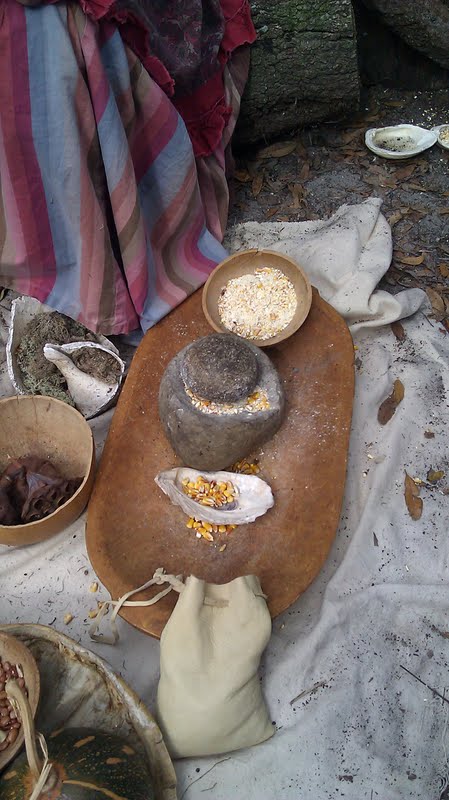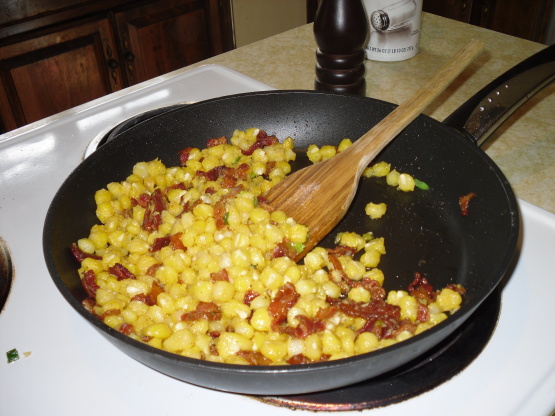
Nourishing the Spirit: The Enduring Legacy of Seminole Traditional Foods
In the emerald expanse of the Florida Everglades, where cypress knees pierce the sky and the whisper of wind through sawgrass carries ancient tales, the Seminole people have forged a life inextricably linked to the land. For them, food is not merely sustenance; it is a profound expression of identity, resilience, and an unbroken connection to the natural world that has sustained them for millennia. From the simple, comforting bowl of sofkee to the hearty bounty of wild game and foraged plants, Seminole traditional foods tell a story of adaptation, survival, and a vibrant cultural heritage that continues to thrive against all odds.
The Seminole’s ancestors, primarily Creek people who migrated into Florida in the 18th century, encountered a landscape vastly different from their original homelands. They adapted, learning to navigate the unique ecosystems of swamps, pinelands, and coastal areas. This adaptation was not just about survival; it was about thriving, building a rich culinary tradition that leveraged the abundance of their new environment. Their diet was a testament to their ingenuity and deep ecological knowledge, a harmonious blend of cultivated crops and the wild offerings of the Everglades.

The Sacred Corn: Foundation of Life
At the heart of Seminole traditional cuisine lies corn, or maize, which the Seminole, like many Indigenous peoples of the Americas, consider a sacred gift. It forms the basis of countless dishes and holds significant ceremonial importance, particularly in the Green Corn Dance (Buskee), a vital annual purification and renewal ceremony.
The most iconic corn-based dish is sofkee. More than just a gruel, sofkee is a thin, watery corn soup, typically made from hominy (dried corn kernels treated with lye or wood ash to release nutrients and soften the hull). It is a staple consumed daily, often throughout the day, providing continuous nourishment and hydration in the hot Florida climate.
"Sofkee is more than just a meal; it’s a living part of our heritage," states Moses Jumper Jr., a prominent Seminole historian and cultural ambassador. "It carries the stories of our ancestors, the strength of our people, and the taste of our perseverance."
Traditionally, sofkee was prepared in a large iron pot over an open fire, slowly simmering for hours. The corn was ground using a mortar and pestle, often made from cypress wood. While its preparation today might sometimes involve modern tools, the essence remains the same: a simple, nourishing dish that embodies communal strength and continuity. It’s often served plain, but can be flavored with a pinch of salt or, for a richer taste, with a piece of meat or a dash of fat. Its understated simplicity belies its profound cultural significance.
Beyond sofkee, corn was transformed into various forms: roasted corn, corn cakes, and a thicker hominy stew often enriched with beans or meat, reflecting the "Three Sisters" agricultural tradition (corn, beans, and squash) that provided a balanced diet and sustainable farming method.
From Glades to Table: Wild Game and Fish
The Everglades and surrounding lands were teeming with wildlife, providing a vital source of protein for the Seminole. Hunting and fishing were not just practical necessities but highly skilled pursuits, conducted with deep respect for the animals and the environment.

Deer and wild turkey were primary game animals, hunted using bows and arrows or blowguns. Every part of the animal was utilized – meat for food, hides for clothing and shelter, bones for tools. Venison, often smoked or dried to preserve it, was a staple. Wild turkey, with its lean meat, was also a prized catch, often roasted whole or stewed.
Perhaps one of the most distinctive elements of Seminole diet was the alligator. Far from a modern tourist spectacle, the alligator was a crucial food source, its lean, white meat a valuable protein. Hunting alligators was a dangerous endeavor, requiring immense skill and bravery. The meat was often roasted, fried, or used in stews, providing a unique flavor profile that speaks directly to the Everglades ecosystem.
"Our ancestors understood the land intimately," explains Loretta Rivers, a Seminole elder known for her knowledge of traditional plants and cooking. "They knew what was edible, what was medicine, and how to prepare it to nourish the body and spirit. This knowledge is our wealth."
Fish, abundant in Florida’s rivers, lakes, and coastal waters, also formed a significant part of the diet. Bass, catfish, and various panfish were caught using nets, spears, or traps. Fish were often roasted over an open fire, wrapped in palmetto fronds, or boiled into a hearty soup. Turtles and their eggs were also consumed, offering another source of protein and fat.
Foraged Riches: The Bounty of the Land
The Seminole’s profound botanical knowledge allowed them to unlock the nutritional potential of countless wild plants. Foraging was an essential skill, providing carbohydrates, vitamins, and minerals that complemented their cultivated crops and game.
One of the most important foraged foods was coontie (Zamia integrifolia), often called Florida arrowroot. While the plant’s roots are toxic in their raw form, the Seminole developed an elaborate and labor-intensive process to leach out the toxins, extracting a starchy flour. This flour was then used to make bread, gruel, or thicken stews, serving as a vital carbohydrate source, especially during lean times. The process involved grating the root, soaking it in multiple changes of water, straining, and then drying the resulting starch. This complex preparation underscores the depth of their scientific understanding of their environment.
Other foraged foods included:
- Hearts of Palm: Harvested from various palm species, these tender, succulent hearts were eaten raw or cooked.
- Wild Berries: Saw palmetto berries, wild grapes, persimmons, and various wild plums provided sweet and nutritious seasonal treats.
- Wild Potatoes (Apios americana): A tuberous legume, providing starch and protein.
- Edible Greens: Various wild greens and herbs were gathered for their nutritional and medicinal properties.
- Honey: Collected from wild beehives, it was a rare and prized sweetener.
Cooking Methods and Communal Life
Seminole cooking methods were dictated by the environment and the available tools. Open-fire cooking was paramount, with food roasted, boiled, or stewed in clay pots or, later, cast iron kettles. Food was often cooked communally, fostering a sense of togetherness and shared responsibility. Drying and smoking were common preservation techniques, essential in a humid climate where food spoilage was a constant concern.
The traditional Seminole dwelling, the chickee – an open-sided, palmetto-thatched structure – was designed for the climate, and often included a central fire pit for cooking and warmth. Meals were shared, stories were told, and traditions passed down, making food preparation and consumption integral to daily life and cultural transmission.
Challenges and Resilience: A Modern Perspective
The Seminole people faced immense challenges, from the Seminole Wars that forced them deeper into the Everglades, to the relentless encroachment on their lands. These pressures inevitably impacted their traditional foodways. The loss of hunting grounds, the destruction of natural habitats, and the introduction of processed, Westernized foods led to a shift in diet, contributing to health issues like diabetes and obesity, which now disproportionately affect many Indigenous communities.
However, the spirit of the Seminole, like their ancestral foods, remains unconquered. In recent decades, there has been a powerful movement within the Seminole Tribe of Florida to revitalize and preserve traditional foodways. This effort is driven by a deep understanding that food sovereignty – the right of peoples to healthy and culturally appropriate food produced through sustainable methods – is intrinsically linked to cultural survival and community well-being.
The Seminole Tribe of Florida, through initiatives spearheaded by institutions like the Ah-Tah-Thi-Ki Museum and community programs, is actively promoting traditional gardening, cooking classes, and the reintroduction of native plants into their diet. Community gardens are flourishing, teaching younger generations how to cultivate corn, squash, and beans, and how to identify and prepare wild edibles. Chefs are incorporating traditional ingredients into modern cuisine, creating fusion dishes that celebrate their heritage while appealing to contemporary palates.
"We are seeing a renewed interest, especially among our youth, in traditional foods and gardening," says Brian Zepeda, Director of the Ah-Tah-Thi-Ki Museum. "It’s about health, yes, but it’s also about reclaiming our narrative and strengthening our community. Every time we plant a seed or prepare a traditional meal, we are honoring our ancestors and ensuring our culture continues to thrive."
The Seminole Tribe’s economic success, largely from gaming and tourism, has also allowed them to invest in these cultural preservation efforts, creating educational programs and facilities that showcase their rich history, including their food traditions. Festivals and cultural events often feature traditional foods, allowing both tribal members and visitors to experience the unique flavors of Seminole cuisine.
A Living Legacy
The traditional foods of the Seminole people are far more than just ingredients or recipes. They are living symbols of resilience, adaptation, and an enduring connection to the land. From the life-giving sofkee to the wild bounty of the Everglades, each dish embodies centuries of knowledge, struggle, and triumph. As efforts to revitalize these foodways continue, they not only nourish the body but also fortify the spirit, ensuring that the unique flavors and profound stories of the unconquered Seminole people will continue to be shared for generations to come.
To eat traditional Seminole food is to taste the Everglades, to feel the sun on your skin, and to hear the whispers of generations who thrived here," reflects James E. Billie, former Tribal Chairman and a powerful voice for Seminole culture. "It is a reminder that we are still here, still strong, still Seminole."


